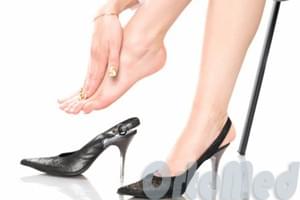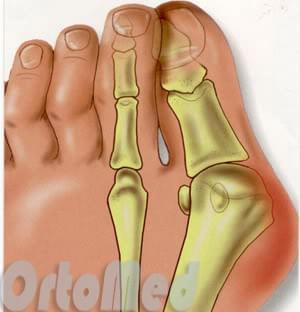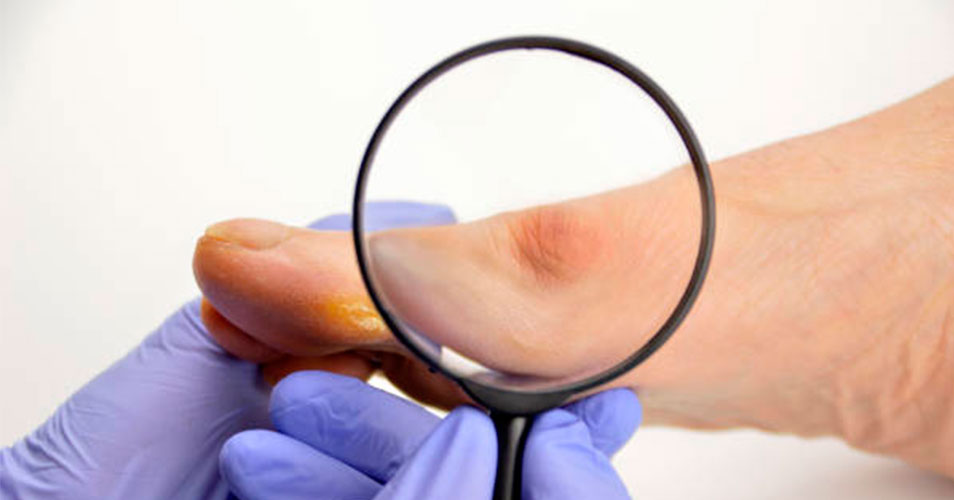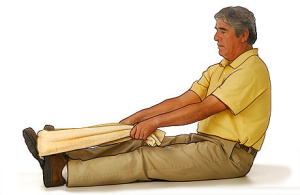Treating a valgus deformity of the big toe almost always begins with fitting the footwear to the anatomy of the foot.
- Pains
- Go
- Rules and principles of gymnastics in valgus deformity
- Effective exercises for valgus deformity
- Causes of valgus deformity
- Hallgus valgus symptoms
- Exercises after bone removal
- Exercises from week 3
- Exercises from the 5th week
- General recommendations.
- Indications for the operation
- Basic diagnostic methods
- Treatment of valgus foot deformity at the Miracle Doctor Clinic
- advantages of the method.
- Rehabilitation after surgery
- gymnastics
- Plantar flexion of the foot, at the ankle.
- Diagnosis of hallux valgus
- Treatment of hallux valgus
- Causes of hallux valgus
- Principles and treatment plan
- Is all this necessary and will it make a difference?
- Surgical treatment of valgus deformity of the big toe
- Cost of treating a valgus deformity of the big toe
Pains
The foot that was operated on begins to hurt in the evening of the day of the operation because the medication used to numb the foot is no longer effective at this point. The pills your doctor gives you before you leave the hospital will help relieve the pain. Applying a cold compress to the operated foot for 20 minutes 4-5 times a day also relieves the pain. Severe pain in the foot subsides within 2-3 days.
Sometimes the severe pain persists for the first few days after the operation, despite taking painkillers. This may be because the swollen foot is bandaged too tightly. Using scissors, cut the bandage on the outside of the foot (on the fifth toe), leave the bandage on the foot, and use a non-sterile gauze bandage. Remember to let your doctor know before removing the bandage.
The swelling usually subsides four months after surgery and can last up to a year. To reduce foot swelling and associated pain, the most important thing is to keep the operated leg elevated over the body for the first three days after surgery. During this time you should mainly lie on your back and rest your leg on three pillows stacked on top of each other. Medicines cannot reduce the swelling that has already occurred. If you can't sleep with your leg crossed, lie down in a comfortable position. A good night's sleep is more important than a raised leg. If you are sitting on a sofa or chair, place your foot on a chair in front of you within two weeks of the surgery. Four weeks after the operation, swelling in the foot can also be treated with lymphatic drainage therapy and contrast baths.
Go
The patient leaves the hospital on crutches. The crutches are used for 2 weeks. For the first three days after the operation, do not lean on the operated leg, but if possible lie down and hold the operated leg across your body (e.g. on three pillows stacked one on top of the other) and only walk if it is absolutely necessary. Walk as little as possible for 2 weeks after the operation and raise the operated leg when sitting (put it on a chair). After the operation, you are usually allowed to walk in special shoes that shift the load from the operated area to the heel.
Depending on the operation, the special shoes are only worn for 6-8 weeks for walking and are taken off during the rest and sleep phase. Driving on public transport and driving a car is possible after 6-8 weeks, depending on the operation. As soon as the time for wearing the special shoes is over, cycling and swimming can be tried out. Walking with poles, jogging, jumping and cross-country skiing is allowed around 16-24 weeks after the operation. When doing sports, you can put weight on your foot until it hurts. Normal shoes can be worn for 6-8 weeks after the operation. Until the swelling of the foot and the pain in the surgical site have subsided, it is advisable to wear soft shoes that are slightly larger than normal. Wearing shoes you like may not be possible until 3-4 months after surgery.
Rules and principles of gymnastics in valgus deformity
Gymnastic exercises for the ball of the big toe are a very effective way to combat valgus deformity in the first stage of the pathology during the postoperative recovery period.
In order to increase the effectiveness of therapeutic exercises, it is important to follow all the doctor's recommendations regarding the frequency, technique and timing of the exercises. However, there are principles and rules of therapeutic exercise that apply to any particular exercise program:
- Systematic and regular – the exercises should be carried out daily. However, most professionals are of the opinion that for a maximum therapeutic effect, the exercises should be performed twice a day;
- Strict adherence to the number of exercises recommended by the orthopedist;
- do the exercises at a time that suits you - don't do them when you're in a hurry, focused on something else, etc;
- A light massage of the foot before starting the exercises increases their effectiveness;
- Monitor the level of exertion - if the exercises are easy, increase the number of sets, or ask your doctor how to make the exercises more difficult.

If these exercises are performed correctly and regularly, after just a week you can see positive results: bone loss, pain relief, strengthening of muscles and ligaments.
Effective exercises for valgus deformity
Before starting therapeutic exercises, experts recommend a general warm-up exercise for 10-15 minutes. Then go straight to the doctor who develops complex gymnastic exercises with the bones in the leg.
The schedule of exercises is developed individually, but we suggest you take a look at the most popular in medical practice, simple and effective exercises for valgus deformity:
- lump – Pick up a small, light object (crumpled paper, matchbox, lighter, etc.) with your toes and place it in your hand, on a chair, or other object of similar height. This exercise is designed to improve joint mobility;
- alphabet – First, lie down comfortably on the floor or on a firm couch. Then raise your leg and start tracing the letters with your fingertips. At first, the number of letters can be small (5-6), then you need to add at least one letter per day, allowing you to write the entire alphabet in one go. This exercise strengthens ligaments and softens hypertonic muscles;
- Bottle – Roll a full bottle with your foot and toes for 2-3 minutes. Instead of a bottle, you can use another item with a similar shape, e.g. B. a scooter. This exercise develops toe motor skills and joint mobility;
- Go – Walk alternately on your heels and then on your toes. You can also do this exercise with the inside and outside of the foot. This exercise is very easy to perform, but it effectively contributes to the normalization of muscle tension;
- Caterpillar – This exercise is performed while sitting with your knees drawn together. When you are in the starting position, use only your toes to move your feet. To move forward, stretch out your toes as if grabbing the bumps in the ground. Press your toes firmly into your foot and push off the ground. The caterpillar exercise helps to train the joints and strengthen the ligaments;
- fist – Starting position: feet and knees together, can be done standing or sitting. Bend your toes into a fist until you feel tension in your feet. Hold the position for 3-5 seconds and then relax. You can also do the same exercise with your toes in the opposite direction, that is, opposite to the movement of the joints. The tension is there, but in completely different muscle groups. This exercise and its variations can improve muscle tone and increase joint mobility;
- To go biking – Cycling is a typical technique (lying on your back, legs raised 45 degrees from the floor, circular movements), but always with the emphasis on the feet. From the first person position, we pull the sock forward as far as possible. Pull the toe in the opposite direction as you move forward. This exercise is good for strengthening ligaments and muscles and developing joints;
- writing with the foot – In this exercise you stand alternately on both feet. Standing on one foot, you hold a pencil, pen, or marker with the toes of the other foot and write numbers on a piece of paper, usually from 1 to 10, putting a period after each number. This exercise stretches the joints, strengthens the foot and leg muscles and improves coordination;
- ironing cloth – You will need a piece of cloth or a kitchen towel. Stretch the cloth out in front of you and try to create as many wrinkles as possible on the cloth with your toes and then smooth them out. You can also grab the cloth and lift it up and lower it again (similar to the 'lump' exercise). This exercise trains your muscles and joints.
- snap - An alternative to the 'ball' exercise is to quickly grab small pieces of fabric with your toes and quickly return to the starting position. You can alternate between the 'pinch' and 'thrust' exercises, which not only help you develop your toe joints but also improve your overall coordination.
Causes of valgus deformity
- Wearing high-heeled shoes;
- wearing flat-soled shoes;
- Hereditary predisposition (weakening of the ligaments of the foot)
- Overloading of the forefoot (sports, dancing).
As the valgus deformity increases, the first metatarsal tilts inward, causing the inside of the foot to rub against shoes, often narrow shoes, and chronic inflammation develops in this area. The inner edge of the joint capsule becomes inflamed and the tissue thickens due to the inflammation. The body tries to strengthen this area by creating bone structure the thickness of the inflamed capsule. This is called calcification.
Many problems that occur in the feet are the result of abnormal pressure or friction.
Hallgus valgus symptoms
- Pain, swelling, redness in the area of the big toe
- Deformation of the forefoot
- Abduction of the big toe outwards (towards the second toe).
- This is sometimes accompanied by a hammer toe deformity of the second toe. As the first toe swings outward, it begins to move the second toe up, causing blisters that rub against the shoe.

Exercises after bone removal
After 3 weeks it is advisable to do exercises, but be sure to seek advice from a specialist.
The exercises must be carried out systematically; if they occur only sporadically, they will not have the desired effect. The aim of physiotherapy is to prevent adhesions and speed up the rehabilitation process. Regular exercise also improves blood circulation and tightens the muscles.
starting at week 3You can progress to high-intensity exercise, but it's best to keep it moderate.
Exercises from week 3
- Grasp the base of the thumb and slowly pull it towards you until you feel discomfort (there should be some resistance, then you have performed the exercise correctly);
- Hold this position for 10 seconds, then gently release. Number of sets: 3 times;
- Grasp your big toe by the base of your foot and pull down, away from you;
- Hold this position for 10 seconds and do 3 repetitions.
For the first week you can do this exercise once or twice a day, but after that 2 weeksFrom the second week 3-4 times a day.
Exercises from the 5th week
On weeks 5 and 6, do the same exercises but increase the number of sets: 6 times a day. In addition, the intensity of the exercises is increased. In addition to the usual gymnastics exercises, the following exercises can be added:
- Take a seated position and straighten your lower limbs;
- alternately stretch one foot backward and forward for about 3 minutes;
- Spread a small cloth, preferably a towel or small sheet, on the floor;
- Then put the foot from which the bone was removed on it and try to pick up the cloth by pulling it towards you.
General recommendations.
In addition to systematic foot exercises, the foot also needs a special massage. You can do this yourself as no special knowledge is required. Simply massage both lower limbs several times a day.
This improves blood circulation in the soft tissues and accelerates the regeneration process. Please note that not only the operated toe is massaged, but the entire foot.
During rehabilitation, it is important to responsibly approach the patient, because it depends on him whether there will be complications or whether there will be a relapse. It is worth noting the main possible complications after surgery:
However, if the patient strictly follows the surgeon's recommendations, there will be no negative consequences. Full recovery is possible after 6 months.
To ensure effective treatment, it is necessary to seek the help of specialists at an early stage of the disease. Only then is it possible to do without therapeutic measures.
It is also worth mentioning that the development of the bones of the big toe can be prevented by wearing appropriate footwear. In addition, we recommend watching the video from the program 'Well living':
Average rating: 4.3 / 5. Number of ratings: 200
There is no rating yet. Just rate it first.
Indications for the operation
- Cosmetic defect of the lower extremity (unsightly bones on the foot).
- Deformed toes that are hooked or pounding.
- Pain, discomfort and other symptoms of the deformity.
- Difficulty choosing and wearing shoes.
- Progression of destructive processes in the foot and joint area (early stages of arthrosis, deforming arthrosis).
A valgus deformity of the big toe is always treated individually, depending on the severity and stage of the pathology. Our specialists in traumatology and orthopedics carry out a comprehensive examination of each patient in order to determine the causes and prescribe the best method of correction.
Basic diagnostic methods
In order to make a diagnosis and choose a method of correcting helux valgus, a comprehensive examination is essential:
- Personal interview with a specialist, examination of the foot;
- X-rays in three projections (to detect coexisting pathologies and complications);
- Ultrasound examination of the joints (to exclude or confirm circulatory disorders in the tissue).
During the examination, the valgus deformity of the big toe must be differentiated, that is, the doctor must distinguish the disease from other pathologies (gout, arthritis, deforming arthrosis). The laboratory examines the patient's blood for inflammatory factors and specific markers.
Treatment of valgus foot deformity at the Miracle Doctor Clinic

The McBride method is used at the Miracle Doctor Clinic to treat a valgus deformity of the big toe. It eliminates the transverse flatfoot and the curvature of the toe without fractures, implantation of metal structures or plaster casts.
There are several variants of the method, and the treatment is selected individually by the doctor based on x-rays.
advantages of the method.
- The patient can walk again the next day after the operation.
- The recovery period lasts no more than 4 weeks.
- After the rehabilitation, the women can wear high-heeled shoes again.
- The duration of the procedure is not long - from 1 to 1.5 hours.
- Gentle anesthesia.
- Possibility of treating two feet at the same time.
- Inpatient stay after the operation of no more than 1 day.
- No post-operative complications.
- Excellent cosmetic effect.
No restrictions on heel height after rehabilitation.
The stitches can be removed at the local clinic, but the patient should return for a second visit and follow-up 6 weeks after the operation.
Rehabilitation after surgery
The rehabilitation period depends on the stage of the disease, but it does not last more than 3-4 weeks. After the operation you will have to stay in Moscow for 5-7 days, preferably with an attendant. Full load on the lower limbs is possible 7-10 days after the operation.
It is very important to approach everything gradually and carefully, since as the disease progresses the patient loses the ability to correctly take the three points of support. In order to maximize the effect of the treatment, recovery exercises, strengthening exercises and drugs to accelerate the regeneration of the joint and ligament apparatus are required.
gymnastics
The first step of the exercise should be moderately strenuous gymnastics, as shown in the figure.
Perform all exercises until you feel discomfort and a slight resistance. The finger should be held in each position for ten seconds. Each of these exercises should be repeated three times. Repeat this type of exercise two to three times a day.
Plantar flexion of the foot, at the ankle.
Put a small towel on the foot and pull it towards you until you feel discomfort. Hold the foot in this position for 20-30 seconds, then rest and repeat the exercise 10-15 more times.

Diagnosis of hallux valgus
At the Odrex Medical Home in Odessa, an orthopedist/traumatologist will make a diagnosis after a thorough examination and comprehensive medical history.
The primary diagnostic method is plantography - taking footprints with special sensors and determining the foot's response to stress.
Another diagnostic method is an X-ray. The x-ray shows the degree of deviation of the first metatarsal relative to the second metatarsal, as well as the inclination of the axis between the first toe and the first metatarsal.
facts. Podiatrists are highly specialized doctors who treat the foot and provide advice on healthy foot care.
The doctor will also recommend computed tomography (CT) — an X-ray of an area of the body in volumetric images and in various cross-sections — to get a full picture of the diagnosis.
A similar examination, but using electromagnetic waves - magnetic resonance imaging (MRI) - is also one of the mandatory examinations for monitoring the body in hallux valgus.
Fact. Spanish proverb. A brook can flow under the foot of a pretty girl.
Treatment of hallux valgus
At the Odrex Medical Center in Odessa, during your consultation with a traumatologist and podiatrist, you will also receive detailed instructions for treating the bunion.
Conservative or medical treatment is aimed at eliminating the symptoms. It is based on nonsteroidal anti-inflammatory drugs (which reduce pain and inflammation).
Conservative treatment is effective only in the first stage of the disease. Other complications of hallux valgus stage cannot be treated without surgery.
Causes of hallux valgus
The main cause of the deformity is imbalanced muscle tone in the foot. Our feet are designed to walk barefoot on uneven ground, but we wear shoes on hard, level ground. And often in shoes with narrow toes. And sometimes even in heels.
All this and some other features of the foot and other parts of the musculoskeletal system that modern man uses that lead to such uncomfortable foot and joint deformities.

The muscles on the bottom of the foot, particularly the thumb adductor, gradually lose tone and stretch because they are not stimulated and exercised.
This leads to the development of transverse flatfoot, which leads to an increase in the cross section of the foot and a curvature of the first metatarsal.
This problem is more common in women. Your ligaments are more flexible and weaker due to hormonal changes. Excess weight and wearing high-heeled shoes increase the load on the forefoot and accelerate the development of this pathology. The shape and structure of the foot is also not insignificant and is inherited.
Many people don't even know they have a transverse flat foot. Women often notice a thickening of the skin in the middle of the forefoot – known as a horn shoe. This is the first symptom of transverse flatfoot. In this way, the body protects the small joints of the foot from excessive pressure. To get rid of corns, the transverse arch of the foot must be rebuilt.

The muscles that extend the thumb lose tension, and the tip of the toe begins to rotate outward. Over time, the long flexor tendon of the thumb expands outward from the metatarsophalangeal joint, accelerating the formation of the deformity.
Principles and treatment plan
- Reconstruction of the head of the first metatarsal and the end of the big toe using mechanical measures.
- Restoring the normal configuration of the transverse arch of the foot using a mechanical device.
- Using special exercises, restore the normal tension of the foot muscles involved in maintaining the normal position of the bones of the transverse arch and the first toe.
- Restoring the balance of the musculo-fascial chains with special techniques.
- In case of complications in the form of bursitis and pain syndromes, anti-inflammatory and analgesic therapy should be carried out.
Note: The treatment must be comprehensive and carried out simultaneously on all points. A one-sided treatment is not fully effective.
Is all this necessary and will it make a difference?
The answer is clearly yes. And there will certainly be a result. Our body has a large reserve of strength and plasticity. Even the bones are constantly changing their structure.
Of course, the result will depend on many factors:
Much depends on the original degree of deformation. The following options are possible:
- With a small degree of deformation, complete healing is very likely;
- At an intermediate grade, great improvement is possible;
- With a high degree, it is possible to avoid surgery;
- If the deformity is very large and surgery is required, you should follow all the steps of the above plan in the postoperative period. Otherwise, there is a 90 percent chance that the hallux valgus will come back in a few years.
Remember: no one will do the work for you. But the results are worth the effort.
Surgical treatment of valgus deformity of the big toe
The operation is performed in hospital under 1-day anesthesia, without osteosynthesis, with small incisions that do not leave scars; the procedure takes about 20 minutes. On the day of the operation, the patient leaves the hospital after 2-4 hours with postoperative shoes (not included in the price of the operation). After 15-20 days it is possible to replace the shoes with your own shoes at the follow-up examination and after removing the bandage. Final medical examination 45 days after the operation.
Make an appointment through the call center: 8-499-333-30-00
Cost of treating a valgus deformity of the big toe
Cost of the consultation: 4130.00 RUB.
Preoperative consultation: 15,000.00 RUB.
Cost of surgical treatment: 250 000.00 RUB.
During the consultation it may be necessary to perform additional tests (e.g. vitamin D3 tests, antibodies against citrulline-containing peptides, densitometry, etc.), which will be charged according to the current OPP price list.
The final cost of the operation is determined during the consultation and depends on the following factors:
- Preliminary examination by an orthopedic surgeon and an anesthetist
- Operation in the clinic with the surgeon, the anesthesiologist and the nurse
- Administration of anesthesia and all medications
- Stay on the ward after the operation
- Tests and examinations before the operation
- Post-operative shoe
- first aid kit
- Postoperative supervision by an orthopedic surgeon
- Comprehensive foot hygiene (medical pedicure) – recommended before surgery and after bandage removal
- flatfoot μb.
- Stages of hallux valgus.
- How to correct a clubfoot in a child.
- ICD 10 chalgus valgus.
- chalgus valgus.
- How do you correct clubfoot in an adult?.
- Massage for flat feet.
- Valgus flatfoot (valgus flatfoot).
